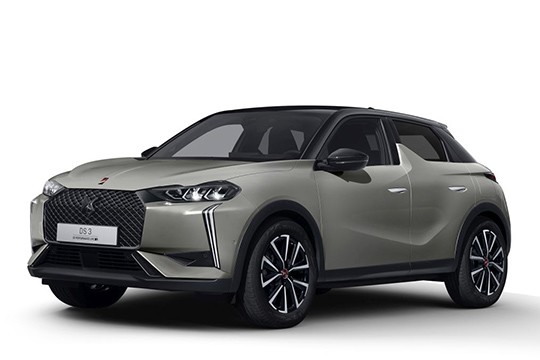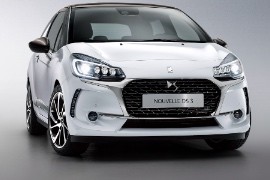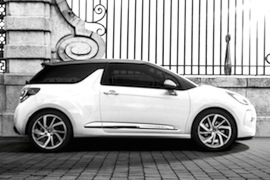DS AUTOMOBILES DS 3 Models/Series Timeline, Specifications & Photos
First production year: 2014
Engines: Gasoline, Diesel, Electric
The French premium automaker DS Automobiles refreshed the DS 3 Crossback in 2022 for the 2023 model year, after four years since the model’s introduction on the market.
When DS Automobiles introduced the four-door crossover version of the DS 3 B-segment hatchback, it added the Crossback nameplate to help customers differentiate the two models. Then, when it refreshed it in 2022, it ditched that and returned to the DS 3 moniker only. Besides that, the new model also lost its halogen-based headlights and other older technologies. DS Automobiles wanted to provide its customers with the best driving experience in the segment. It competed against vehicles such as the Toyota Yaris Cross and the Renault Captur, but it had a significant advantage over them: it was also available as a full-electric vehicle. Or so the carmaker thought.
The updated version came with a broader grille that was either black or adorned by chromed elements, depending on the options. In addition, all vehicles came fitted as standard fitted with LED headlights and new, twin vertical LED daytime running lights. As a result, the small-sized crossover aligned with the rest of the DS range. On the lower side of the bumper, DS Automobiles placed an A-shaped air intake in the middle, flanked by a pair of angular-looking scoops.
With a profile that looked almost identical to the one offered by the non-facelifted version, the refreshed DS 3 tried to convince its customers with a unique design. Its B-posts sported a body-colored section just above the waistline, followed by piano-black pillars and window frames on the upper side. The car’s flush door handles popped out when the driver approached the vehicle with the key in their pockets. These could also be exposed when unlocking the car. A set of black trims decorated the wheel arches and the side sills, emphasizing the higher ground clearance of the vehicle. Out back, the car manufacturer placed a black shield on the lower side of the bumper and a set of fake vents above it. There was also a new, redesigned set of taillights with a jewel-like 3D pattern inside.
DS Automobiles created a luxurious cabin for five adults, although only two could comfortably fit in the car, which was narrow. Fronting the driver was an instrument cluster filled with a seven-inch TFT display that showed the much-needed dials of the speedometer, tachometer, and other relevant driving data. In addition, the automaker placed a 10.3-inch touchscreen atop the center stack in a free-floating position, which was convenient to use by the driver but not by their side passenger. The front bucket seats provided mild side bolstering, good enough when traveling long distances but not great while driving hard around corners.
Under the hood, DS Automobiles installed a choice of Citroen-sourced engines, either with gasoline, turbodiesel, or an electric variant. The latter has received a larger battery pack, leading to better efficiency.
Citroen finally launched the DS Automobiles brand in 2016, and along with that, it refreshed the DS 3 lineup, which was initially named Citroen DS3 when it was unveiled in 2009.
While the name could still confuse some customers, the car was promising. Specific dealerships sold it but were not necessarily connected with the Citroen brand. In addition, the automaker tried to create an upscale vehicle with a French flair, different from what the Germans, the British, or the Swedish automakers could provide. After all, the three-door hatchback and its open-top sibling, the DS 3 Cabrio, were well-received by customers, who bought them in almost 400,000 units in the model’s six-year lifetime until the DS Automobiles brand was established as an independent marque.
Starting with this model, the “double-chevron” badge on the vehicle disappeared completely. It has been replaced by the DS badge ever since and has helped the car manufacturer create its brand identity. A chromed trim adorned the front fascia, surrounding the main grille, and extended with wing-like elements that underlined the headlights. Lower, on the apron, the automaker added a shiny horizontal slat, while below it was a center-mounted trapezoidal air intake flanked by round fog lamps.
The idea of the floating-roof design was well-received by customers, so DS Automobiles didn’t want to change it. As a result, the DS 3 featured a B-pillar with a black upper area that matched the roof color. The side rear windows and the one from the tailgate were visually combined with the dark D-pillar. As a result, the DS 3 created the image of a large, wrap-around glass area. Furthermore, the A-pillars were also dark, and the color of the door matched their look mirror caps. Customers could get the vehicle with either 16- or 17-inch alloy wheels, depending on the engine version and options.
The cabin was revolutionized once again, even though the DS 3 went through a facelift in 2014. For the 2016 model year, it boasted a new touchscreen for the infotainment system that allowed Apple CarPlay connectivity and mirror Android phones. However, it wasn’t equipped with Android Auto. The flat-bottom steering wheel sported the DS badge in the middle, while in front of it was a three-circular instrument cluster, where the speedometer took center stage. It was flanked by the rev counter on the left and by an LCD display on its right. Depending on the grade, the car featured buckets or sports seats at the front, covered in leather, and sporting a unique design with a rectangular pattern. At the same time, in the back, the split-folding bench seat could expand the trunk space.
Under the hood, the automaker narrowed the engine choices, but it still kept the most potent version available. Besides the lowest-powered version of the vehicle, all the others were turbocharged. Power was sent to the front wheels only via five or six-speed manuals or a six-speed automatic.
Citroen launched the DS line of products in 2009, and its first model of this new range was the DS3. It received a facelift in 2014 and became a brand ambassador for DS Automobiles.
One of the biggest successes in the history of the French automaker was the 1955 Citroen DS. When launched, it stirred the market with its advanced technologies, such as adaptive suspension, variable ground clearance, and cornering lights. Fast forward to 2009, and the car manufacturer tried to impose a spin-off marque named DS. Unfortunately for it, the market crashed due to the world financial crisis. But Citroen didn’t drop the towel and pushed harder. As a result, the DS3 became a hit on the market, with almost 300.000 units sold in five years. Come 2014, the lineup went through a well-deserved facelift, which affected both the coupe and the cabrio version of this small-sized vehicle.
The refreshed DS3 was promoted as a new brand, known as the DS Automobiles, although that marque hasn’t been established yet. At the front, the facelifted DS3 featured new headlights, which featured an LED-Xenon combo for a broad and uniform beam on the road. Even though it wasn’t promoted as a Citroen, it sported the “double-chevron” badge on the chromed trim above the grille. On the lower bumper, the automaker installed a pair of air intakes on the outer area. A fog lamp set was placed between these, and the main grille extended downward into the apron.
From its profile, the DS3 continued the idea of the floating-roof styling, with blackened upper areas on the B-posts. At the same time, the dark D-pillars, along with the side and rear windows, created a wrap-around glass appearance. Depending on the grade and options, a chromed trim adorned the lower side of the doors and the rear quarter panels. Finally, out back, the DS3 sported LED taillights that flanked the tailgate, which was slightly raked forward on its upper area and adorned by a roof spoiler.
Inside, the automaker completely redesigned the dashboard. Atop the center stack, a touchscreen was placed underneath the center vents and above the HVAC controls. Below these, the DS3 featured the stereo, while on the center console, it had the gear stick or the selector for the available automatic transmission. The front bucket seats featured mild bolstered areas and were designed mostly for comfort. As an option, customers who got the most potent version got sportier seats. In the back, the split-folding bench seat could enlarge the trunk space.
Under the hood, the 2014 DS3 featured exclusively Euro6-compatible gasoline or turbodiesel powerplants that sent their power to the front wheels. The engines ranged between 82 PS (80 hp) and 163 PS (161 hp). Citroen paired them with either manual or automatic transmissions.


